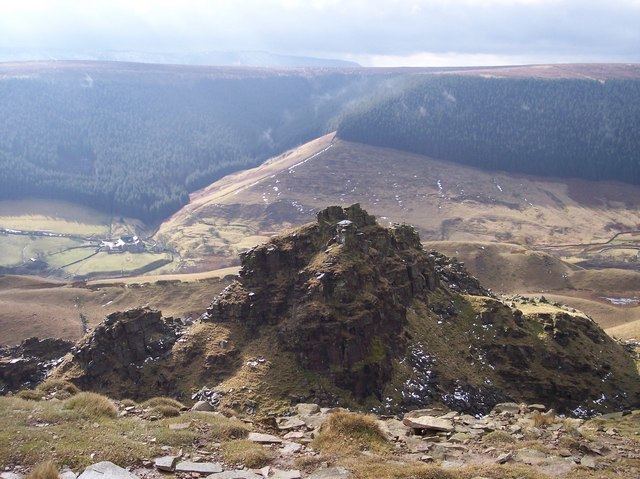 | ||
Peak district walk alport castles the upper derwent valley
The Alport Castles are a landslip feature in the Peak District National Park in Derbyshire. At over half a mile long, it is thought to be the largest landslide in the United Kingdom. The name "castles" comes from the debris from the landslide, which has produced several protruding grit-stone mounds which tower over the valley and appear from the distance to look like castles. Viewed from a distance the largest of these, the "Tower", resembles a full-scale motte and bailey castle.
Contents
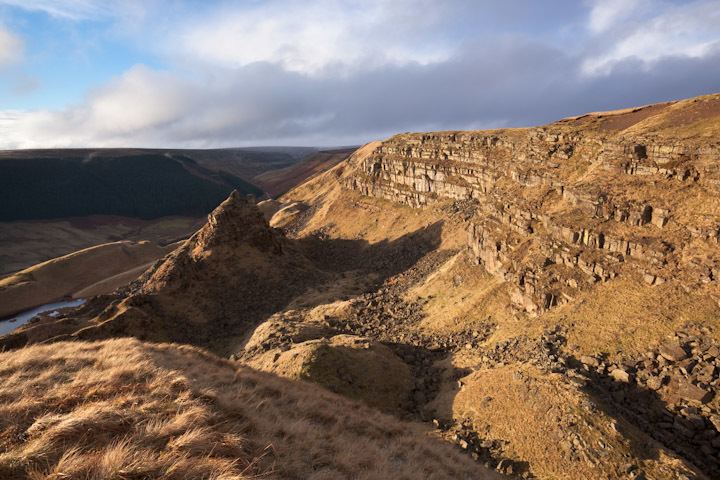
The Alport Castles are situated on the Eastern side of the River Alport Valley, and is part of the National Trust's High Peak Estate; they lie north of the Snake Pass and north west of Ladybower Reservoir.
Alport castles
Formation
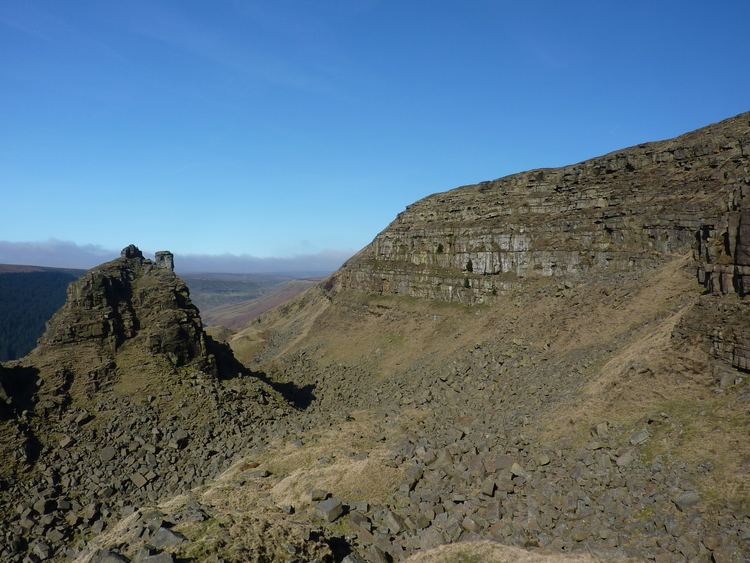
300 million years ago, the broad area was part of a river delta that flowed into the sea which covered the area now known as the Peak District. The deposits from the ocean are structured such as the finest material travel the furthest and are deposited in the deep ocean as black shales. Further deposits accumulate on the slopes of the oceans and collapse resulting Turbidite deposits. Further turbidite flows erode into previous ones resulting in the type of deposit which is seen at Alport Castle. As the delta progrades (mouth of the river moving further out to sea), the deposits become coarser. For the Peak District this coarse material is the Gritstone which caps topographic highs around the area and protects them from erosion.
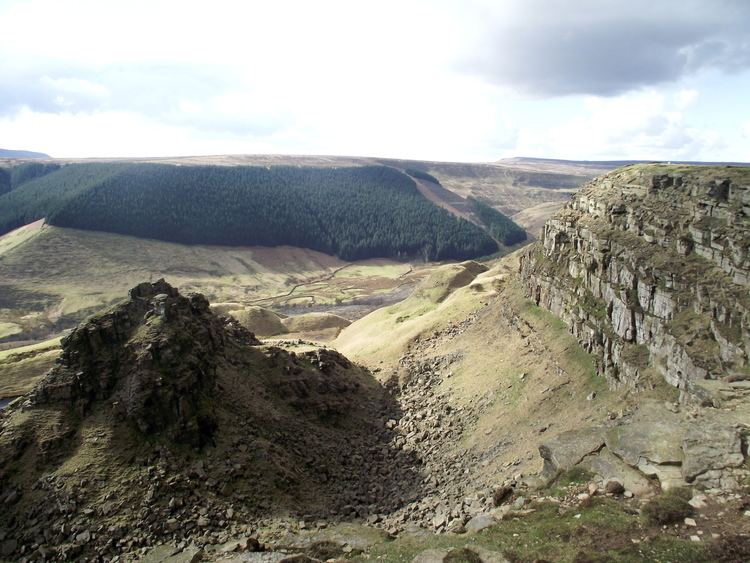
The exact cause of the landslide is unknown, but similar if less dramatic landslips occur all around the Dark Peak, notably on Mam Tor.
One theory is that the river eroded the softer layers, causing the landslide.
Other theories include:

The soft shales which lie below are too weak to support the weight of the heavy sandstone above and collapse under it.
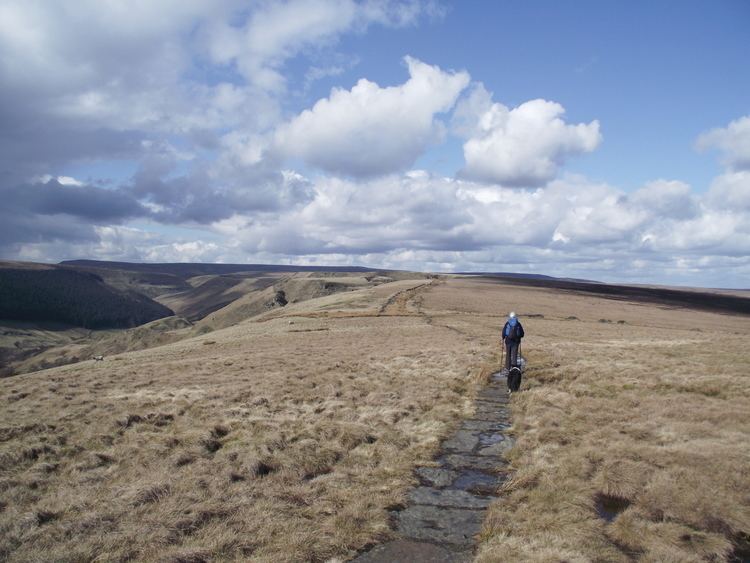
Or that because water can run through gritstone but not shale rock, trapped water may have "lubricated" to the rock to the point where one layer slid over another, causing the landslide.
A further possibility is that a valley glacier steepened the sides of the valley leaving unstable slopes which failed after the glacier melted, causing the landslide. However immediately upstream is a normal river valley so any glacier would have been small. Alport Castles has been selected for geological conservation as one of the most significant landslips in Britain.
Today
The rock faces and cliffs are unstable and unsuitable for climbing and scrambling; however the site is accessible along some well trodden public rights of way, and is a popular site for walkers.
The site is also of interest for bird watchers, as both ravens and peregrine falcons have been known to nest on the crags.
The remote Alport Castles Farm lies on the River Alport below the site. This is the farm where the suffragette Hannah Mitchell was born in 1871 and brought up.
